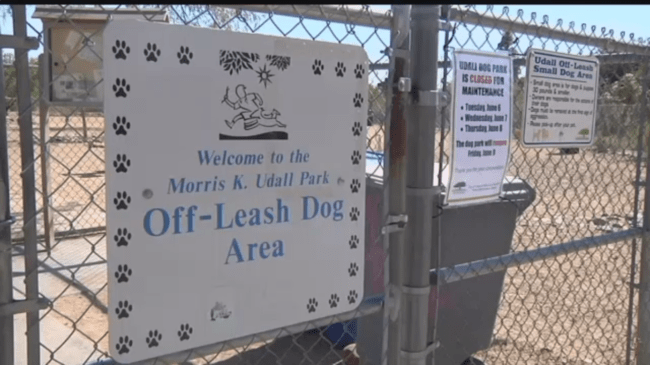In February we reported on a nationwide story involving the potentially life-threatening bacterial infection, Leptospirosis. Lepto is carried by rats, wildlife and livestock, and generally spread through tainted standing water. Cases have been reported by veterinarians in Illinois, California, New Jersey and Arizona – where an additional case was recently reported.
What is Canine Leptospirosis?
Leptospirosis is an infectious disease caused by a bacterium called Leptospira. Infection…
Posted by Cedar County Veterinary Services on Tuesday, May 12, 2015
The infected dog was confirmed to Pima County Health Department and Pima Animal Care Center officials by a private veterinarian. According to PACC Director of Veterinary Services, Dr. Jennifer Wilcox, the dog frequented Udall Park, located at 7200 E. Tanque Verde in Tuscon. She recommends that dog owners avoid this area, and consult their veterinarian if their dog recently visited the park.

Common signs of canine Leptospirosis include excessive water intake, urinating more than usual, lack of urination, red eyes, depression, muscle pain, poor appetite, and a fever over 103.5° F.
KVOA | KVOA.com | Tucson, Arizona
There have been seven total confirmed canine cases within the community. Dr. Wilcox recommends that local dog owners consult their veterinarian if they notice any of the common signs of illness in their pets. In serious cases Lepto can cause liver, kidney, lung or blood clotting issues that could be life threatening.
Dogs that go to boarding facilities, dog parks, or those that roam outdoors with exposure to livestock, wildlife, or potentially contaminated water are at a higher risk of Lepto. Owners should consider vaccinating their dogs depending on their individual degree of risk.
Here is an interesting link about canine Leptospirosis infections and the kidney damage they can cause, as well as the…
Posted by Dialysis for Pets, Frankie’s Friends, Tennessee Campaign on Wednesday, May 4, 2016
There have been no recorded cases of human Leptospirosis in Pima County since 2000, but pet owners, veterinarians, and their staff can protect themselves by avoiding areas where pets urinate frequently, washing their hands after taking pets for walks, and washing clothes that may have come into contact with pet urine.
H/T to KVOA.com
Featured Image via Facebook/Idexx Learning Center

